
Archive for the ‘Uncategorized’ Category
Duolingo: Extreme Sports Heroes
Friday, April 11th, 2025
EPISODE PART 1:
Sibusiso and the Big Mountain
Sibusiso Vilane has stood at the summit of the worldâs tallest mountains. He is a mountaineering icon from South Africa, who has ascended Mt. Everest twice. He has reached the greatest heights in the world… but growing up, he never even thought about climbing a single mountain, until fate intervened and changed the direction of his life forever.
His first conquest of Everest put him in the history books as the first Black man from Africa to make it to the top. But the message he carried back to all South Africans was even more important to Sibusiso: one of equality of potential and ability, at a time when the country was still emerging from the painful legacy of apartheid.
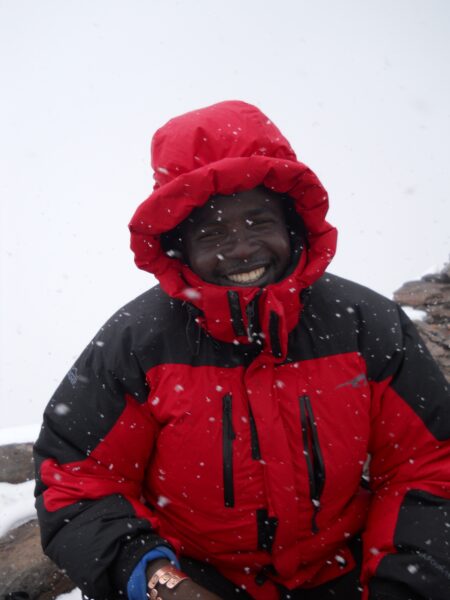
EPISODE PART 2:
Bianca’s Big Wave
Bianca is a professional extreme surfer. She has surfed big waves all over the world. But there was always one wave that scared her the most: the Mavericks surf break, in California. Along the way, conquering Mavericks also became a battleground to fight for equal opportunities for women in surfing.
Today, thanks to the advocacy of Bianca and other female surfers, surf contests are starting to treat women equally to men — including them in all the major contests and awarding them the same prize money when they win. But the fight is far from over.
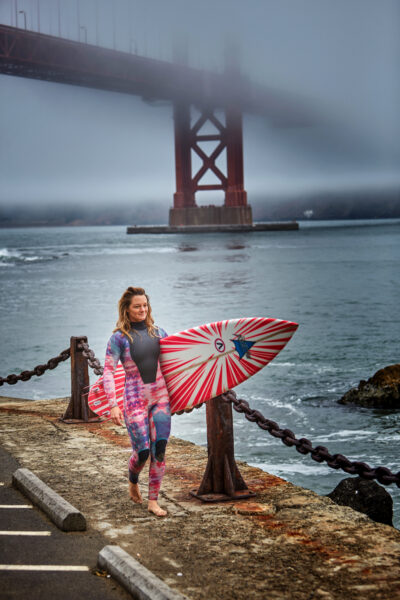
Tags: Bianca Valenti, big-wave surfing, Duolingo, extreme sports, Julia Scott, Mavericks, Mavericks surf contest, mountaineering, Mt. Everest, podcast, Sibusiso Vilane, South Africa
Posted in Podcast and Radio Work, Uncategorized | No Comments »
The Enchanting Mr. Rice Guy
Thursday, January 20th, 2022
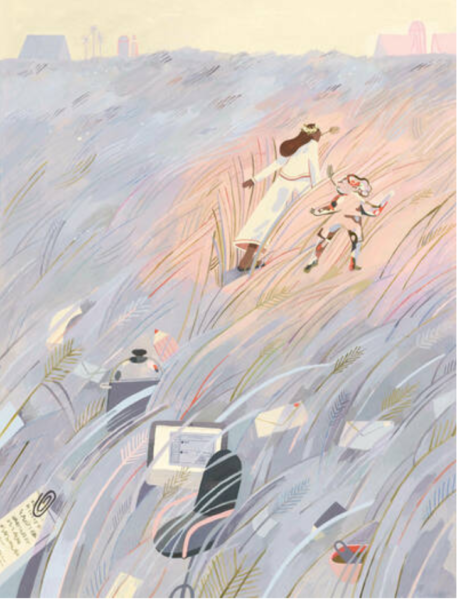
Hereâs the last time I remember playing with my childhood imaginary friend, Mister Rice Guy. Iâm 8, and itâs my least favorite time of day: recess. Iâm friendless and alone at my new school, and so I bring him with me that day â normally he stays home. We walk the perimeter of the chain-link enclosed yard behind the school as kids around us scream and play. My classmates assume Iâm talking to myself, so they start mouthing my words, wreathing them with derisive laughter.
Until that day, my imaginary friend had been a source of comfort. That moment transformed him into a source of shame. Mister Rice Guy (whose name I am sure I took from misunderstanding the phrase âMister Nice Guyâ) disappeared.
Thirty-two years later, in the nadir of a global pandemic, he came back again. But more on that in a moment.
According to my parents, Mister Rice Guy first showed up when I was 5. I was an awkward only child with a need for an imaginary companion who understood me. I was very private about him. He never came to the dinner table, and I never told my parents what he looked like. He and I spent long hours locked in conversation, playing together on the floor of my green-carpeted bedroom. What did he look like? In later years, Iâve been embarrassed to admit I couldnât quite remember. What I do know is how he made me feel. Safe and warm. Seen, heard and protected.
Maybe you had a special friend in childhood who made you feel that way. Or more than one. The experience exists on a spectrum, stretching from conversations with a favorite toy or stuffed animal to personified imaginary entities like mine.
For the most part, children know these friends are âpretend.â Thatâs the point. Theyâre not a delusion, but rather a way to access feelings and qualities that our youthful selves know to be important, but which weâre not ready to claim as part of our essential identities. Theyâre our emotional backpacks, apart but close at hand, there when needed to deliver a store of strength or calm.
Experts say a childâs imaginary friend can be someone to consult when making a decision. They can make us feel better about our peer relationships, giving us insights on how to handle friendships and disagreements. And they offer the capacity to imagine new outcomes to difficult situations. Feeling trapped and confused, say, in a pandemic? Your imaginary friend might help you imagine a way out.
âThe kind of mind that can reason about the past and think about the future is the kind of mind that can come up with an alternative,â says Marjorie Taylor, a professor emerita of psychology at the University of Oregon. Taylor has studied childrenâs fantasy lives for decades. I called her up recently to ask if I was crazy, because suddenly Mister Rice Guy was back.
No, she said. I was not crazy. In fact, more adults could benefit from finding new ways to play.
In the shortest, darkest days of that first fearful winter, as COVID-19 mutations circled the globe, I sat at home, hushed and frightened and uncertain. From bleary days to long, insomniac nights, a heaviness assailed me in my solar plexus. It dragged me down and made me cry, on and off, for days at a time. And then suddenly, one night, all I could think of was Mister Rice Guy. I swore I could feel his presence in my bedroom.
Was I losing my mind? I looked around in the dark and felt like a fool. Why would my old companion be back in my life? Could he even recognize this sad, 40-year-old variation on the (also kind of sad) child he had comforted at the age of 8?
The next morning, I woke up, exhausted and confused, and took a hike for the first time in months. I drove to a hilly park with fresh green grass. At the outset, I wondered if Mister Rice Guy would tag along, but still it made no sense. Why would my old companion want a friend like me? I was weepy and depressed and old. If he were there, heâd want to play.
Suddenly I knew what I needed to do. I took off my pack, climbed a medium-size hill, waited until no one else was looking â and rolled down that hill. I collapsed at the bottom, giggly and dizzy and covered in burs. You cannot be sad after you roll down a hill. And I know for a fact that I didnât roll down that hill all by myself. I got a push from Mister Rice Guy.
After that, we spent a lot of time together. As the first pandemic winter yielded to its second spring, I left my apartment as often as I could, taking long walks where I paid special attention to bird and insect worlds. What were their days like? I imagined walking side by side with Mister Rice Guy on these explorations, which made them feel adventurous and fun. That line of ants streaming by a smeared banana â where was their nest? (We tried to follow the trail of ants for as far as we could.) How closely could we sneak up next to the hummingbirds on my street before they zoomed away? By then Iâd realized, to my delight, that I hadnât forgotten what my childhood friend looked like: He looked like no one, or like everyone who isnât me. In an era that seems all too ready to demonize the Other, here was a presence of pure Otherness, radiating the acceptance I hadnât been able to access on my own.
If someone saw me talking to myself, let them wonder. I felt no shame.
Iâm sure I am not alone in having invoked a childhood presence for my own comfort over the past year. More than one friend has told me they reached for their oldest, most cherished stuffed animal in recent times â rescuing them from closets or shelves, gently stroking their much-repaired coat and reconnecting with ancient feelings of safety and innocence.
I spent 32 years living without Mister Rice Guy, because I made friends and gained confidence out in the world. But I had forgotten how to play.
Weâve all observed the intense absorption of children at play. As a writer, Iâm envious of their ability to invent characters, storylines and games without effort. Imagination is a form of pleasure and escape. Itâs not quite like an adult daydream. To play is to live in the present, unremittingly, without distraction or self-judgment. Thereâs a sense of discovery and wonder.
Playfulness is a collective trait. âI can walk into any daycare anywhere in this country and see children pretending all day long,â says Taylor, who wrote the definitive book on pretend friends and has spent her career unraveling the mysteries of why we play. She believes the instinct for imaginary play is universal, and that imagination itself is fundamental to the human condition. And not just for humans. Taylor points to a handful of studies going back to the 1950s that suggest gorillas, chimpanzees and dolphins engage in imaginary play â among each other or with their human interlocutors.
The âwhyâ of it is less evident: Play may serve a profound evolutionary purpose that we still donât understand. But the capacity for imagination benefits us all our lives â whether itâs to propel us to the moon or to write the occasional poem. We also all have the capacity to think about things that donât exist, might have been or could be. Thinking about the past, imagining a future: These are the tools of fiction. And what is our daily self-talk if not the adult version of our childhood attempts to cope with these past and future notions?
Who can we be speaking to?
Imaginary friendships werenât even thought to be good for children until the 1990s, when an efflorescence of research began to suggest otherwise. Today, having fantasies of this nature is considered not just healthy, but an important rite of passage for some. Studies by Taylor and others suggest that up to 65 percent of us had an imaginary friend, or multiple friends, in childhood or adolescence. (Other studies suggest the number is much lower, around 30 percent).
Researchers have found that the presence of an imaginary friend â whether a wholly-invented figment of a childâs imagination or a favorite object like a stuffed animal that has a personality and âconversesâ with the child â tends to correlate with high levels of creativity and empathy. Some of us invented entire worlds with imaginary characters and storylines, called paracosms. In doing so, we gained a whole lot more than companionship.
The benefits also accrue later in life. Several recent studies have shown the experience of having an imaginary companion likely makes adolescents and adults more independent, resilient and prone to ask for help when they need it. And, yes, adults who used to have imaginary friends do engage in more self-talk than other people.
But why might I â or any of us â seek a reunion with our pretend playmates? The answer may lie in the disorienting circumstances of our new reality. My childhood world was small and turbulent and vulnerable. Adults were the force majeure, compelling where I went and what I did. Our COVID-19 lives today are similarly proscribed, attenuated and disordered by forces outside our control. Thereâs a deadly pandemic on, and not even the grown-ups know whatâs going to happen next. Our worlds are again defined by hard boundaries and closed doors. And just like in childhood, we survey our lives in the lonely hours of before-sleep or before-dawn, waiting for the point where we again have something to look forward to.
For me, spending time with Mister Rice Guy helped me realize how big my world truly is, no matter how small it can feel inside the daily closed loop of my pandemic bubble. The last time he and I played together when I was 8, his world was bounded by my green-carpeted bedroom and the fenced-in recess yard behind my school. When he came back to me, we enjoyed a leisurely ramble through the Sonoma County hills all day, hunted for ripe blackberries and compared the personalities of the different cows we ran into (and tried to run up to) on skinny ranchland trails.
After we took those first post-vaccination forays into the world, my fears started to ebb, and Mister Rice Guy stopped coming around. Iâm OK with that â it was a reunion, after all, and this time his departure isnât the sudden banishment of an ashamed 8-year-old girl. Heâs gone away for now. But if living is coping with uncertainty, he could very well be back.
Heâll be welcome. I sleep better these days knowing I have an extra friend who requires no social distancing, who sees me clearly with his every-colored eyes. And whoâll remind me when itâs time to play.
Tags: childhood, COVID-19, Dr. Marjorie Taylor, Imaginary friends, Julia Scott, pandemic, Paracosms, The power of play
Posted in Uncategorized | Comments Off on The Enchanting Mr. Rice Guy
Duolingo: Two Unexpected Entrepreneurs
Thursday, August 20th, 2020
EPISODE PART 1:
She Can Fix It
Stephanie Lopez is a woman in a manâs profession, something some men have never let her forget.
Stephanie, a mother of two, owns Woosters Garage in Weston, a small town in central Wisconsin. She named her garage after her great-great grandfather Glen Wooster, the first in a long family line of men â including her grandfather and father â who love fixing cars⊠a passion she inherited.
Today, Stephanie Lopez is proud to run her own garage. But her road there was bumpy, winding and full of unexpected barriers.
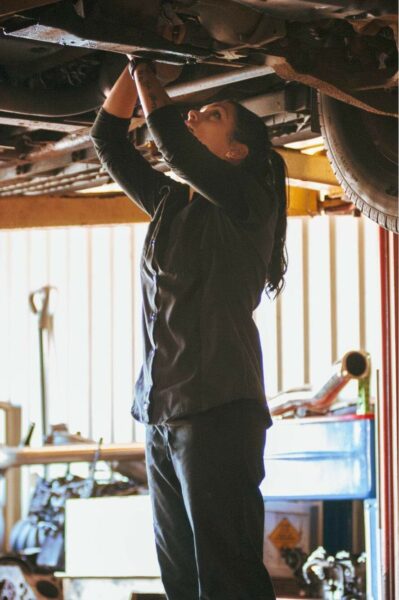
EPISODE PART 2:
Silicon Valleyâs Wizard of Jobs
Rahim Fazal seemed destined for a thriving career in the tech industry when the web company he co-founded as a teenager made him a millionaire overnight.
Rahim is 38 today. His dreams of making it in Silicon Valley eventually did come true⊠But along the way, he noticed that not everybody was equally welcome there. The troubling question of who gets to belong in the heart of the tech world â and who doesnât â eventually led Rahim to take the biggest leap of his career.

Tags: Duolingo, Entrepreneurs, inspiring, Joel Scott, Julia Scott, podcast, Rahim Fazal, Silicon Valley, Stephanie Lopez, SV Academy, Woosters Garage
Posted in Uncategorized | Comments Off on Duolingo: Two Unexpected Entrepreneurs
How Canadians Took Silicon Valley… And Never Owned the Win
Tuesday, June 12th, 2018
[Original story here: https://thelogic.co/news/the-big-read/origin-story-canadians-in-silicon-valley/]

Lars Leckie knew C100 had arrived when he was walking down the street in downtown Toronto a few years ago, crossing an intersection while wearing his C100 jacket. A young entrepreneur stopped him mid-stride, and introduced himself. ââItâs so great to meet someone from the C100!ââ Leckie recounts the man telling him. âAnd Iâm like, âIâm just in downtown Toronto, Iâm not at an office where you expect to see startups,ââ says Leckie. âIt was pretty cool.”
Bay Area venture capitalists like Leckie, managing director at Hummer Winblad Venture Partners, rarely get that kind of open-mouthed rock-star treatment in Silicon Valley, although they are a key part of its mystiqueâthe golden-robed men and women who, like ancient Roman emperors in the Colosseum, control pollice verso the fate of companies and the circulation of economy-altering sums of money.
But together, the charter members of C100 have inspired their own mystique, a coveted stamp of approval. C100 is a small, member-driven non-profit that connects Canadian tech entrepreneurs with the Valleyâs top Canadians in the industry. Hundreds of companies apply for 48 Hours in the Valley, its signature program, each year. Only 20 are selected. The pitch session trainings and mentorship that CEOs receiveânot to mention introductions to fundersâhave contributed to the growth of companies like Clearbanc, Frank And Oak, Kik, Wealthsimple, Tulip and Well.ca.
All told, more than $3 billion in venture capital was invested in Canada in 2017, and another $3.2 billion the year before that. C100 estimates that the funds companies with a C100 connection since 2010 easily stretches into the billions. Yet the story of Canadian excellence in the Valley is fraughtâand not just by conversations at home about âbrain drain,â even as Canadian entrepreneurs continue to derive a net benefit from the training they get from U.S. universities and tech jobs. The other issue is the hidden history of Canadian success itself.
In its reluctance to acknowledge the realities of the modern tech diaspora, Canadiansâor the Canadian press, at any rateâhave inadvertently overlooked the names and diminished the achievements of generations of Canadians who handed the baton to the tech workers transforming our digital economy.
The resulting lacuna may seem benign, but it has had real consequences for todayâs tech talent, according to Canadians I spoke to in the Valley. Itâs fostered a hesitation for Canada to celebrate its winsâand has affected Canadian entrepreneursâ tendencies to see themselves playing a bigger role on the world stage.
âAmericans are so good at telling the entrepreneurial story and Canadians need to improve. In the mythology of Silicon Valley, we are surrounded by the Elon Musks, the Steve Jobses. Who are those people in Canada? Most kids in high school donât even know who Tobi LĂŒtke is,â says Anthony Lee, a managing director at Altos Ventures and co-founder of C100, referring to the founder of Canadian e-commerce behemoth, Shopify.
People here like to say that the longer you live outside Canada, the more fiercely Canadian you become. The charter members of C100âa Whoâs Who of Canadian technoratiâpay for the privilege of participating in events and volunteering their time, not the other way around. Leckie defines the job as âmaking sure that people know Canada is kicking ass.â
He meets me at his officeâa bright, wood-beamed space whose windows overlook San Franciscoâs Pier 33, where tourists queue up along the ferry dock to Alcatraz. In a previous life, before attending Stanford University, Leckie was a member of the Canadian Sailing Team, who represented his home country at the Pan American Games. But the plaque he keeps in his office has nothing to do with sailing competitions. He excuses himself and comes back a minute later to show it to me: a hockey puck mounted on a trophy base, presented to Leckie by C100 to thank him for his work as an inaugural co-chair of the organization.
Yet judging by how Canadians back home perceive the diaspora, people like Leckieânot to mention Lee and his C100 co-founder Chris Albinsonâcould represent the face of the âbrain drainâ as much as any of the young engineering grads migrating down from the University of Waterloo or the University of Toronto today. They had intended to come to the Bay Area for a year or two before returning home, but ended up staying. They are giving their time (and, sometimes, money) to help Canadian companies succeed. But they are agnostic on the question of where Canadians should locate their startups, at least in the beginning stages.
âWe think people ought to be in the ecosystem here, to be a part of it. If you want to be a giant in tech, you have to spend some time down here. But you donât have to stay here,â says Lee.
Albinson cringes at âbrain drain.â âItâs a term I find horrifically bad for the country,â he says. âNo, weâve always been about supporting Canadian entrepreneurs. But if youâre only doing Canadian entrepreneurship in Canada, that gets away from this idea of flow. There should be no barrier for capital, people or information.â
Some of the people I interviewed for this story live in the Bay Area, while some have returned home to Canada. But none of them say their career trajectories would have been possible had they stayed in Canada, rather than coming to the U.S. for work experience. Thatâs changing now, but there is too much precedent to think it will end any time soon.
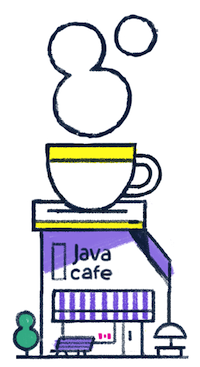
The early 1990s saw a wave of Canadians pouring into the Valley on the crest of the telecom boom. Two cohorts preceded them, but their names and stories are not widely known. This is where the details get sketchy, owing to a lack of published materials. Itâs hard to piece together a narrative from the paucity of recorded histories: unlike the volumes of work on Americans (including American immigrants) and their successive technologies, the body of information on Canadian tech achievers is, for the most part, paper-thin.
Iâm not the only one whoâs noticed, either. âIâve not come across an historian of Canadian technology. If you find said person, please share their name with me,â John Stackhouse tells me. The former editor-in-chief of The Globe and Mail now works for RBC, and is writing a book on the Canadian diaspora. He helped a bit with the following history.
Canadians at U.S. engineering schools in the â40s and â50s undertook advanced studies and research as part of the Cold War nuclear academic arms race. Starting in the â60s, Canadians are thought to have worked at companies like Fairchild Semiconductor, one of the early chipmakers that helped Silicon Valley get its name.
In subsequent years, Canadians were among the engineers who developed software programs, modems and routers at companies on both sides of the border. The University of Waterlooâs computer science program was established in 1964, soon becoming one of the biggest of its kind in the world, catching the eye of companies like IBM. Around that time, U.S. companies started hiring Waterloo grads, a tradition that continues today.
Some important names come up in conversations that track the origin story of Canadians in the Valleyâpeople of Canadian descent whom some of todayâs tech cohort have claimed as their forebears. Cecil Green, co-founder of Texas Instruments, was born in England and raised in Vancouver, where he studied at the University of British Columbia in the â20s. His financial gift helped build the universityâs Green College and a visiting professorship program. Gururaj âDeshâ Deshpande is an Indian immigrant who studied at the University of New Brunswick (UNB) and Queenâs University in the late â70s. He worked at a Motorola subsidiary in Toronto and later co-founded Sycamore Networks, one of the biggest IPOs of the telecoms era, and endowed an innovation centre at UNB. And then thereâs James Gosling, the father of the Java computing language, who was born and raised in Calgary and worked at Sun Microsystems for nearly three decades before moving on to Oracle, Google and Amazon Web Services.

By the â90s, Canadians were thick on the ground in early computer software, graphic design, telecoms and mobile. And then they started climbing the masts of the Silicon Valley flagships: Shaan Pruden at Apple, Jeff Skoll at eBay, Don Listwin and Rob Lloyd at Cisco, Jeff Mallett at Yahoo, Doug Roseborough at Oracle and Rob Burgess at Macromedia (now Adobe). The list really does go onâand thatâs before you get to todayâs top Canadians who occupy the upper ranks at marquee companies like Facebook, Dropbox, Uber, Google, Salesforce, Zynga and Slack.
Silicon Valley Canadians of the late â90s and early aughts didnât have a lot of ways to find each other. There wasâand still isâthe delightfully-named Digital Moose Lounge, which hosts social gatherings like Canada Day events. Aside from that, people were mostly dispersed, ending up camouflaged among American colleagues at work. Later, when LinkedIn came along, Leckie created a âCanadians in the Bay Areaâ LinkedIn group, and Canadians started self-identifying. That helped form the basis for C100âs early outreach.
The Canadian ability to blend in has made it surprisingly difficult to pin a number on the population of expats in the Bay Area; various estimates peg it at somewhere between 250,000 and 350,000. Not even Rana Sarkar, consul general of Canada in San Francisco and Silicon Valley, knows for sure. He says, âA good chunk may have dual passports andâŠare inadvertent Canadians: either their parents are Canadian, or they moved down here at a young age or theyâre laying low and have married an American.â
But the central question of what constitutes a Canadian is an interesting one, he reckons. What about people like Deshpande and Musk, who passed through Canada and occasionally reference their maple-leaf roots? âIf someoneâs mom or dad is a Canadian and theyâve only visited the country a few times, does that mean theyâre a Canadian of interest?â Sarkar asks. If the answer is yes, the narrative of the Canadian diaspora will need to be expandedâand many in the Valley think Canada will the better for it.
â
Thereâs an expression Albinson, the C100 co-founder, uses often: âWhen the United States catches a cold, Canada catches the flu.â In 2008, Canadaâs tech sector had a bad flu in the midst of the financial crisis. âCanada, as an innovation economy, was on deathâs door,â he recalls. âThere was no venture capital. There was no angel money. And all over the country, entrepreneurs were losing their companies. Nortel was dead, Research in Motion [known as BlackBerry] was wobbly.â
It took a crisis for Canadians of the Valley to see themselves as a collective asset.
In addition to co-founding C100, Albinson is co-founder of Founders Circle and Panorama Capital. A Kingston boy, he was always intrigued by a painting of the Golden Gate Bridge that his grandmother brought home from a trip to San Francisco. He dislikes hierarchy and the East Coast. And he loves the weather and beauty of his adopted home of Larkspur, a little town in Marin County, Calif., where he meets me in the garden patio of a restaurant with fountains and birdsong.
Back in 2002, when he was a venture capitalist at JP Morgan Partners, Albinson was part of a trip to India designed to showcase the countryâs goal of becoming a technology leader by 2020. In Delhi, he witnessed the benefits of viewing Indian expatriates not as a lost liability but rather as an asset. The Indus Entrepreneurs (TiE) is a Silicon Valley-based non-profit that connects entrepreneurs with South Asian roots around the world with funding, networking, education and mentorship. Founded in 1992, TiE became a model for C100 to emulate in building its own support ecosystem for expats.
By contrast, in 2008, Canada had few startup incubators. And it had a tax law requirement that made foreign venture funding of Canadian startups so difficult that investors were skipping the country altogetherâCrunchbase called it âa leper colony for tech entrepreneurs.â Canada eliminated the tax section in 2010, after lobbying by stakeholders like C100, says Albinson.
âWe realized the Canadian environment was very fractured,â says Albinson. âOne of the reasons why Canada wasnât having that much success wasnât that the entrepreneurs werenât good, but because the ecosystem around them was a mess.â
Albinson and Lee hatched C100 together just minutes after first meeting at an event in Palo Alto sponsored by the Canadian government. The consul general wanted to recruit them to a business advisory board to stimulate industry connections, but they had a better idea.
In January 2009, Albinson stood in front of the 85 most successful Canadians in a conference room on Sand Hill Road, the so-called âWall Street of the Westâ in Menlo Park, Calif.. He cleared his throat and issued a call to action on behalf of their homeland. âI looked them in the eye and said, âYouâve had the privilege of a passport, youâve had an amazing education. Because youâre in this room, youâve had a lot of success down here. You have a responsibility. We want to start this. You owe it to these entrepreneurs to do this.ââ
Lee says they felt inspired by Own the Podium, the national campaign (now a non-profit) to invest in Canadian winter sports that helped make Canada the top gold-medal finisher at the 2010 Vancouver Olympics. âIt was very un-Canadian to say, âWeâre going to win,ââ says Lee, âand I think it was kind of a turning point for the Canadian psycheâ (Later, C100 created its own video homage to Own the Podium with a Silicon Valley twist: âItâs about claiming the podium as ours, painting it red and white, crushing it and sprinkling the dust into the eyes of our competitorsâ).
Albinson and Lee werenât sure if their pitch would work. It was a novel ask, and people inside the room had no reason to contribute, other than their patriotism. âWhat I didnât know was, did the thing that burns inside me about being Canadian, was that in everybody?â says Albinson.
Nearly everyone took out a pen and wrote a cheque for US$850.
â
What a difference a decade makes. As Canadaâs tech sector gains traction, government support and major venture capital from south of the border, the freshly-laid infrastructure convinces top Canadians in the Valley that the growth trend will accelerate. Itâs when someone like Montreal native Patrick Pichette moves on from his role as CFO at Google and turns venture capitalist, joining iNovia with the express purpose of elevating Canadaâs best startups. Or when homegrown Hootsuite hero Ryan Holmes uses his success to build a national entrepreneurship accelerator to help youth in Canada launch the next big thing.
In 2017, Canadian companies comprised 14 per cent of the Deloitte Technology Fast 500, which tracks the fastest-growing tech companies in North America, up roughly three per cent from the year before.
Today, itâs U.S. venture firms that are working to get in front of Canadian entrepreneurs. Andrew DâSouza, co-founder and CEO of fintech service company Clearbanc, says he personally hears from at least one U.S. venture capitalist a week, usually from San Francisco or New York, asking him for advice on whom they ought to be meeting with in Toronto. âPeople are starting to wake up and realize thereâs great talent and great companies built here,â he says.
Itâs no longer strictly a requirement for Canadian entrepreneurs to knock on Silicon Valley doors for Series A funding, or even to base their companies in the Bay Area, says DâSouza. But you do need a âgood connectionâ in the Valley, if only to level-set with the competition. âIn Canada itâs very easy to be a big deal before youâve accomplished very much. You can get in The Globe and Mail and you can get on TVâŠ. Itâs helpful to be able to look up and realize youâre actually competing on a global scale.â He co-founded Clearbanc in San Francisco in 2015, but a year later, it was clear the conditions were right for a move to Toronto. Now he recruits from both countries.
Albinson talks about being Canadian as though it were a superpower. âYou tell people, âIâm Canadian,â and suddenly youâre into three levels of trust. You need to be very, very careful with that. Thatâs one of the things I tell the C100 folks: we have this amplification that weâve been entrusted with, whether we know it or not.â

More than a decade after Canadaâs telecoms era sputtered, the countryâs tech economy has all the ingredients it needs to dominate. Whatâs missing right now may not be something C100 can provide.
âItâs almost just a matter of confidence,â says Lee. âOne thing Iâve noticed is that Canadians working in any industry will pay more attention to Canadians outside the country. Canadians have always needed outside validation. Itâs always been part of the culture.â
He pauses. âPart of what weâre trying to say is, âStop it, already.ââ
Americans donât need to name their success stories constantly because theyâre all sewn into the mythology. Theyâve managed to make all their disparate stories into American onesâto give them an inevitability. But in this case, history is being made in real time by Canadians at home and abroad in an industry that has little narrative of its own.
Canadians will recall getting intermittent history lessons on TV in the â90s by way of âHeritage Minutesââ those iconic national video clips depicting important Canadian moments. Theyâre how we learned about Canadaâs contributions to basketball, Superman and even the real-life bear that was said to have inspired Winnie the Pooh. But why not the father of Java?
âI grew up during the Canadian iconography era,â says Leckie, referring to those film clips. âItâs always been my goal that Canadian tech would have that moment in the sun.â
If that happens, it will need to include the Silicon Valley diaspora.
Tags: brain drain, C100, Canada, Julia Scott, Silicon Valley, The Logic
Posted in Uncategorized | No Comments »
Beyond #MeToo: Teaching Boys About Consent
Wednesday, January 24th, 2018
Coaching Boys Into Men
When is the right time to start teaching young boys about consent, boundaries and respect toward women?
A nationwide program called Coaching Boys Into Men trains school coaches to work with boys as young as 11, who are on their school’s athletic teams. Boys trust their coaches, and the conversations that ensue are designed to plant seeds that will help prevent abuse — and give young men the tools to speak up when they see something that’s not right.
Student athletes are often the leaders at their schools, and they can set the tone for the other students.
At Petaluma Junior High School, former student Danny Marzo and Athletic Director Zach Dee told us about how the program has led to changes on a personal level in the school culture overall.
This story was part of a series on KQED’s The California Report, Beyond #MeToo: Sex, Abuse and Power Through a California Lens .
Tags: #MeToo, Julia Scott, KQED, The California Report
Posted in Uncategorized | No Comments »
© 2025 Julia Scott.